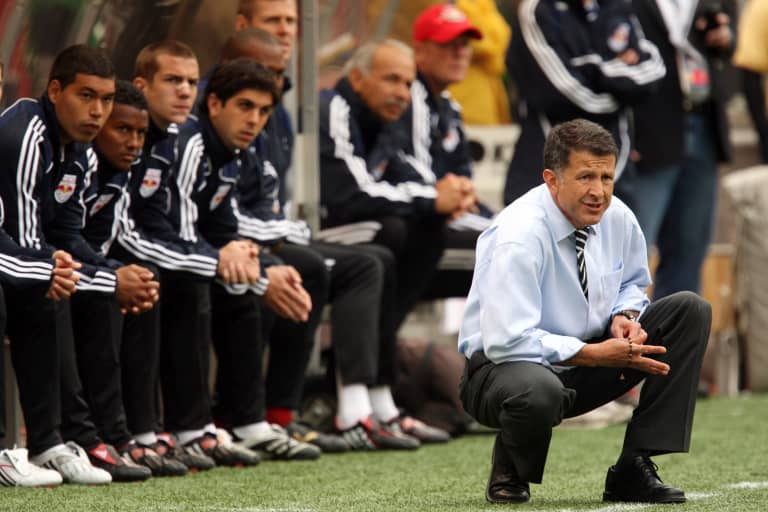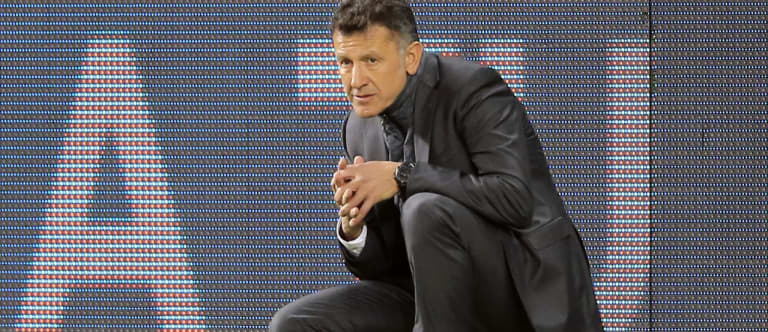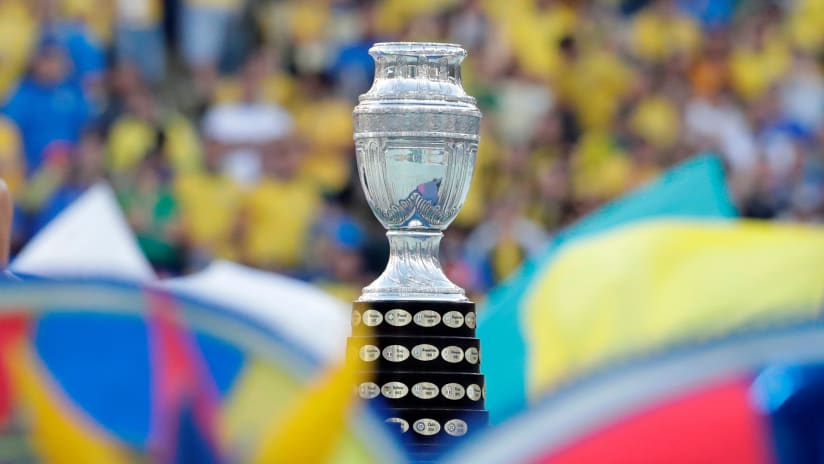It was a cold November day in Massachusetts. The first meandering fingers of frost crept over the fields and the treetops as the Chicago Fire convened for their final training session in advance of their all-important one-off Eastern Conference Final against the New England Revolution.
The year was 2007, and the Fire had already been through the wringer. After five years at the rudder, Dave Sarachan had been fired at midseason, and then-club president John Guppy pulled Juan Carlos Osorio from his post at Millonarios in Colombia to replace Sarachan. Osorio promptly engineered a turnaround that helped the Fire not only qualify for the postseason but win their first playoff series against D.C. United.
Osorio quickly distinguished himself from Sarachan, who was established as a forgiving player’s coach in his time in Chicago. Osorio, by contrast, styled himself as “The Professor,” a title his players used to describe his incessant micromanagement and studious nature. He was a stern presence in the locker room, and he endeavored to control every facet of the team’s gameday experience, but he got the job done in a relatively short window.
Current Philadelphia Union coach Jim Curtin was a player on that 2007 team. He got an abrupt introduction to Osorio’s oftentimes prosaic coaching moves when he was moved to left back in Osorio’s first game in charge. Curtin had never played the position before, and after the Fire lost 4-0 to Houston he never did again.
Like everyone else, Curtin filtered out to the field on the last training day before the New England semifinal expecting a tight practice. Training sessions on the eve of big games are rarely lighthearted. So the surprise slammed into him when Osorio bounded out to the field and had a surprise training regimen for the team.
Handball. The team played a game of handball.
“He was all over the shop,” Curtin said. “It was extreme with him. When you thought you had him figured out, he’d always give you a twist and a wrinkle that always kept you on your toes.”
Osorio’s time in MLS provides a necessary backdrop to his current post as the wildly successful coach of the Mexican national team. Since taking over for Miguel Herrera in October 2015, Osorio is an incredible 23-4-5 with Mexico, a winning ratio of 79 percent in one of the hottest seats in international soccer. And while his biggest loss was an unforgettable one – a 7-0 humiliation against Chile in the Copa America Centenario quarterfinals last year – he’s largely been heralded as one of the most successful Mexico coaches in modern times.
Osorio spent a short half-season in Chicago in 2007 before moving on to the New York Red Bulls shortly after a 1-0 loss to the Revolution in that aforementioned semifinal. Across both stints, he spent the better part of three seasons in MLS and led the Red Bulls to their first MLS Cup appearance in history before resigning following a poor run in 2009. He left MLS with a 22-34-23 record from 2007-2009.
Osorio did a considerable amount of growth as a coach in MLS. Two of his first three head-coaching gigs were in the league, which meant a necessary proving ground after starting his coaching career in 2000 with the Red Bulls and then Manchester City as a conditioning coach and advanced scout.
Osorio’s time in Chicago burned bright and hot and fast, like a comet entering the upper atmosphere and then breaking apart. And his introduction to the Fire during their first team meeting after his hiring provided an early glimpse of the coach he’d become.
“The intensity with which Juan Carlos walked into the room, it was like, ‘Whoa, this is going to be different,’” Curtin said. “It was almost so emotional that it was a little bit over the top and intense for a first meeting. I remember everyone kind of looking around thinking, ‘Whoa, this is really different.’”
He rapidly became known as a tinkerer, subtly shifting formations and lineups before every game after exhaustively pouring over scouting reports and advanced game tape. Osorio prided himself on being the most prepared man in the room, almost to the point that he often came across as abrasive in the fervency of his opinions. His famous magnetic board was more or less a third appendage. Players would often enter his office to see him hunched over his board moving players around in mock formations like a mad scientist combining elixirs.

Sometimes he’d even sleep at the facility, and his outsized personality left an immediate impression. Players remember Osorio walking into the training facility and flashing his carefully sculptured abs.
“He was a unique guy. He always had his notebook,” said Chris Rolfe, whose first stint in Chicago ran from 2005-09. “He’d be running around on the field, stopping play, using his magnetic board to show guys what he wanted. He knew what he wanted and he knew how he wanted to get there. With that clarity, that helped us obviously go in the direction he wanted.”
Osorio’s time in Chicago came to an abrupt end. It was an open secret Osorio had family in New York and wanted to return to a Red Bulls franchise that gave him his first professional coaching position as a trainer. So it perhaps wasn’t so much of a surprise that just eight days after resigning his Fire post in early December 2007, he was announced as the Red Bulls’ replacement for Bruce Arena.
Osorio’s meticulousness only grew with the Red Bulls, if such a thing was even possible. Jeff Agoos, named the Red Bulls’ technical director shortly after Osorio arrived, lived less than two miles from his new head coach. Osorio frequently rang Agoos at all hours with requests for additional game film on upcoming opponents. The scene as Agoos walked in the door was invariably the same.
“He would have this setup of, his kids were upstairs playing, his wife was off doing something and all he had was this video and his notepad in front of him,” Agoos said. “He would just take meticulous notes over and over and over on his opponents he’d be facing.”

As in Chicago, Osorio’s impact with New York was white-hot out of the gates and largely came to bear in playoff series that he spent hours studying. Carlos Mendes, a former Red Bulls central defender who’s been with the New York Cosmos since 2013, got a taste firsthand when Osorio promptly moved him into the defensive midfield. Mendes had never played there before. In true Osorio fashion, after appearing in 17 regular-season games in 2008 Mendes was moved back into central defense for the postseason.
“The first thing [you notice] when you meet him is how intense he is and how passionate he is about the game,” Mendes said. “I remember from the first meeting we had as a team, when he spoke about the future and what he’d like to see in his vision of the club, I just remember coming out of that meeting thinking he loves his job, he’s passionate and he’s very intense.”
The Red Bulls snapped up the eighth and final playoff spot on the final day of the 2008 regular season and promptly went on a run to their first-ever Conference Championship (in the Western side of the bracket) and MLS Cup appearance against the Columbus Crew. After going behind in the first half, the Red Bulls briefly knotted the game at 1-1 behind a 51st-minute John Wolyniec goal before Chad Marshall put the Crew ahead for good two minutes later.
If there was a knock on Osorio, it was in the shifting sand of his tactical bedrock. There was always a new frontier to discover, a new rotation wrinkle to explore, a different tactical yarn to tug. Sometimes he’d shift from a 3-5-2 to a 4-2-3-1 to a 4-3-3 in three successive games, based on his incredibly detailed notation system on the opposition. Osorio often kept his players for 90-minute film sessions - Curtin said he tries to keep his under 10 to keep players from dozing off - and excitedly pointed out minute tactical details.
It had a tendency to wear on certain players. So when the 2009 season went south to a historic degree, the club didn’t wait long to bring out the hook. The Red Bulls started the year a brutal 2-16-4, one of the worst runs of form in league history, and Osorio resigned in August after being eliminated from the CONCACAF Champions League by Trinidadian club W Connection.
“I think some of the difficulties he encountered in 2009 were the ways and the culture of how the American player prepares,” Agoos said. “I don’t think the American player prepares in the same way for training and matches in the same way that Juan Carlos does. I think it’s got to be the right environment. I think the culture with the Mexican team, what they’re all about, it works well with how Juan Carlos prepares for games.”

After leaving the Red Bulls, Osorio bounced around to clubs in his native Colombia, Mexico and Brazil before earning the call-up to coach the Mexican national team following the brief Miguel Herrera era in 2015. Since then, Mexico have racked up win after win with regularity.
Osorio’s is a unique tale, an international coach cutting his teeth in MLS before ascending to the highest rungs of the game’s international ladder. And for those who played under him and managed alongside him in those hot-and-cold days, The Professor’s rise makes all the sense in the world.
“I think any coach who maybe wasn’t a big name when they came to our league and goes on to do big things, it only helps the league grow and helps the coaches in particular get more respect,” Curtin said. “What Bob [Bradley did] at Swansea City, for example, they’re big steps. I think it’s good to have someone who sees the game differently like a Juan Carlos Osorio. He’s one of the most unique coaches I’ve ever met."













